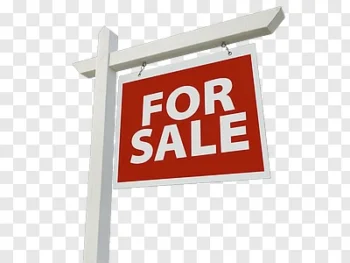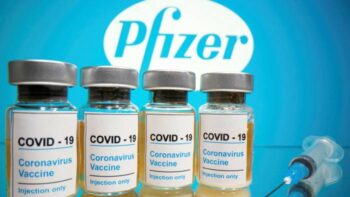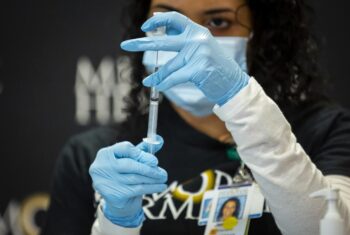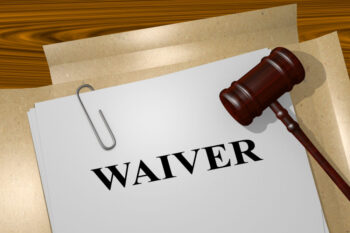Selling a medical practice is a significant decision, and for many medical office managers, it can be a daunting task. Whether it’s because the physician is retiring, seeking a new career direction, or another reason, preparing the practice for sale requires careful planning and execution. As an office manager, your role is critical in ensuring the practice is in good shape, … [Read more...] about Preparing Your Medical Practice for Sale
coronavirus
5 reasons to hire a medical scribe
As the manager of a medical office, you understand how crucial it is to provide quality patient care while also maintaining efficient operations. One way to achieve this is by hiring a medical scribe. In this article, we will explore what a medical scribe does, why your office might want to hire one, and how to find the right candidate. What is a Medical Scribe? A medical … [Read more...] about 5 reasons to hire a medical scribe
Court gives guidance about return to onsite work and ADA
By Mike O’Brien In ADA Case, Tenth Circuit says onsite work may be essential One of the most frequent questions that the writers of these updates receive is whether employers who moved to a remote workplace in response to the COVID pandemic may now recall employees to onsite work. Generally, we’ve advised employers that they are free to require onsite work, although they may … [Read more...] about Court gives guidance about return to onsite work and ADA
How to create an enhanced cleaning and disinfection policy for your medical office
In the age of COVID-19, complying with the rigorous hygiene requirements of OSHA and other standards may not be enough. That’s because the U.S. Centers for Disease Control and Prevention (CDC) and public health guidelines mandate that work facilities still in operation undertake special enhanced cleaning and disinfection measures. This is particularly the case for healthcare … [Read more...] about How to create an enhanced cleaning and disinfection policy for your medical office
How you can help employees suffering burnout
By Indira Totaram bio It’s the feeling of being drained but unable to recharge, the frustration of a tiring routine, the everyday distress in response to the current state of the world—employee burnout is now more widespread than ever. As the pandemic endures and its effects trickle down, many are struggling to keep up with workplace demands, longer hours, and remote work … [Read more...] about How you can help employees suffering burnout
Updated info for Pfizer-BioNTech vaccine
On Dec. 11, 2020, the U.S. Food and Drug Administration issued an Emergency Use Authorization (EUA) for the Pfizer-BioNTech COVID‑19 Vaccine for the prevention of COVID-19 for individuals 16 years of age and older. Review Pfizer’s Fact Sheet for Healthcare Providers Administering Vaccine (Vaccination Providers) regarding the limitations of authorized use. During the COVID-19 … [Read more...] about Updated info for Pfizer-BioNTech vaccine
Model waiver of COVID-19 infection liability sign to post at your medical office
As long as COVID-19 remains a threat, you run the risk of being sued by clients, vendors, guests and other visitors (“visitors”) who claim they contracted the virus at your office facility as a result of your inadequate safety measures. One way to limit liability is by conspicuously posting a sign at the entry of your facility indicating visitors’ agreement to waive their … [Read more...] about Model waiver of COVID-19 infection liability sign to post at your medical office
EEOC issues COVID-19 vaccine guidance
By Mike O'Brien bio On Dec. 16, 2020, the Equal Employment Opportunity Commission (EEOC) updated its COVID-19 guidance to include a section devoted to vaccinations. The EEOC’s guidance answers these and other COVID-19 vaccine questions: “Is asking or requiring an employee to show proof of receipt of a COVID-19 vaccination a disability-related inquiry?” “If an employer … [Read more...] about EEOC issues COVID-19 vaccine guidance
Using waivers to avoid getting sued for COVID-19 infections
PLEASE READ NOTICE TO ALL ENTRANTS AND USERS OF THESE FACILITIES EXCLUSION OF LIABILITY – ASSUMPTION OF RISK THESE CONDITIONS WILL AFFECT YOUR LEGAL RIGHTS INCLUDING THE RIGHT TO SUE OR CLAIM COMPENSATION FOR AN INJURY OR ILLNESS In these times of pandemic, signs and forms like this purporting to shield the owner of a facility against liability have become a fixture in … [Read more...] about Using waivers to avoid getting sued for COVID-19 infections
“COVID captains” keep the focus on safe work practices
By Dan Scungio The year 2020 has roared to a close, and COVID-19 is unfortunately still around. We have made changes to our lives at home, in public, and at work. Healthcare workers, in particular, made several changes early on with PPE use and work practices that are still in effect today. A great deal of work had to be done early on this year to provide information to staff … [Read more...] about “COVID captains” keep the focus on safe work practices









